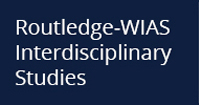
- Jin Noda, Associate Professor (June, 2014)
Land of Kazakh and Kazakh Nomads—History of the Kazakh Khanates
I specialize in the history of Central Asia. The definition of Central Asia varies, but in my understanding, it means the area extending across the Xinjiang Uyghur Autonomous Region in the north western China and five countries of the former Soviet Union: Kazakhstan, Uzbekistan, Turkmenistan, Tajikistan, and Kyrgyzstan.
Among these countries, my current study focuses on the history of Kazakhstan. With a vast steppe region that occupies a large part of the country, Kazakhstan was once the base of nomadic life for the Kazakh nomads. In the 15th century, they formed a unique nomadic government called the Kazakh Khanates. The country went through a process of dissolution in the first half of the 19th century, and was mostly annexed by the Russian Empire, excluding some Kazakhs who lived in the territory of the Qing Dynasty (China). One of the significant features of this country was that it was geographically located between the Russian Empire and the Qing Dynasty. My study focuses on the history of the Kazakh Khanates in the 18th and 19th centuries.
The Kazakh Khanates were the nomadic government that lasted until the end though various nomadic groups were engaged in power struggle in Central Asia. Therefore, I assume that the history of the Kazakh Khanates has great significance in our understanding of the history of Central Asia from the Mongol Empire onward.

Figure 1: Summer camping ground of Kazakh nomads (Ili Kazakh Autonomous Prefecture, Xinjiang Uyghur Autonomous Region). (Courtesy of Jin Noda)
The Mobility of the Kazakhs—Studies Not Bound by Borders
Another important feature of the Kazakh Khanates is the mobility of the Kazakh nomads who made up the country. Based on this property, we can point out a problem in previous research on the history of the Kazakh Khanates.
It is simple historical fact that the period of the 18th and 19th centuries was when Central Asia (including the Kazakh Khanates) was dominated and annexed by the two empires of Russia and China. After the collapse of Imperial Russia, the territory was handed over to the Soviet Union, and, as a matter of course, Kazakhs were included in the borders of the Soviet Union. Ever since serious study began during the era of the Soviet Union, it was discussed within the territorial framework of the Soviet Union.
However, the Kazakh nomads were constantly moving across the borders of the empires of Russia and China. Even after the Russian Empire and the Qing Dynasty concluded a border demarcation treaty, the movement of the Kazakhs continued until around the 1960s. Therefore, we cannot depict the history of Kazakh Khanate correctly within the framework of borders in the modern age.
As Central Asia is a region that was mostly dominated by large countries, we can say that the history of the Kazakh Khanates has been depicted from the viewpoint of a large country. As a result, research relying on the historical materials written in the empire was affected by the influence of the ruler’s perspective. As a matter of fact, however, each ethnic group has its own history that cannot be described by the relationship between ruler and subject as seen from the viewpoint of a large country. In recent years, research trends are changing, and many studies are being performed from the viewpoints of the ethnic minority groups.
In what way can I see the history in a new light, with the Kazakh Khanates in the center? This is my current main theme of research.
Reconstruction of the Kazakh Khanates History with the Triangle Model
If we are going to review history focusing on the Kazakh, free from the viewpoint of a large country, then we must face the problem of research materials. The Kazakhs have rarely had their own written historical records. Therefore, we have to review the historical materials left by the empires of Russia and China. I have proposed the triangle model (Figure 2) for an approach to do this. In this model, the Russian Empire, the Qing dynasty, and the Kazakh Khanates are considered independent actors, and the interactive relations between each of the actors (arrows A, B, and C in the figure) are relativized.

Figure 2: Triangle model (by Jin Noda)
The period of the 18th and 19th centuries was an age of active diplomatic negotiations. Even though the Kazakh Khanates did not leave written history in document form, there are Russian and Chinese historical documents that describe their initiatives, such as diplomatic talks, balancing through political efforts, and dealing. What I do in particular in my analysis is to compare records kept from the point of view of the Russian Empire with records of the same incident created by the Qing Dynasty in order to extract the facts. Using this approach, I determine what actually happened and how it impacted the Kazakh Khanates. The Kazakhs’ intentions and activities are brought to light as a result.
What I consider the most important in the triangle model is paying enough attention to the relationship between Russia and Qing (C), in addition to that between Kazakhs and Qing (A), and Kazakhs and Russia (B). Relationship C has rarely received attention in past studies on the Kazakhs because it appears that the relationship is irrelevant. In the Russia-Qing correspondence, however, I have found that they expressed their own views on the Kazakhs. By integrating the fragmentary descriptions found in C with the descriptions in A and B, we begin to see the details about the Kazakh Khanates, such as what the country’s presence was like, how both empires treated them, and what their intentions were.

Figure 3: Archival documents in Russian

Figure 3: Archival documents in Manchu

Figure 3: Archival documents in Turkic
Materials written by the Kazakh do exist, although they are rare. (Courtesy of Jin Noda)
I suppose that this triangle model can be applied to various studies that deal with the history of a small country or a minority group located in between two or more large countries. For example, this model would make it possible to conduct studies on Georgia (located between Iran and Russia) or the Ryukyu Kingdom (located between Japan and China).
What Is the Ethnic Consciousness of Various Ethnic Groups in Central Asia?
The concept of the Kazakhs is very new. In the era of Mongol Empire, the Mongolians extended their control over a broad area, and mixed with local people in each region. In the land of the Kazakhs, the Kazakhs of today emerged over the course of this history, but we cannot explain their roots simply.
In addition, we can say that the Kazakhs’ sense of belonging to a country was extremely low. It was after the borders were established that they first came to be conscious of such a sense.
Now, I am planning to apply the triangle model not only to the Kazakhs, but also to other ethnic groups in Central Asia, such as the Uighurs, Kyrgyz, and Dungan, in order to unveil the process by which ethnic consciousness and a sense of belonging are formed.
In the narrower sense, my research focuses on the history of Kazakhstan and the Kazakh people. In practice, however, it deals with broader world across the Eurasian Continent through Kazakhs. This is what I am most interested in, and I feel that this research has great possibilities.
Interview and Composition: Mariko Oshio
In cooperation with: Waseda University Graduate School of Political Science J-School










